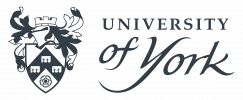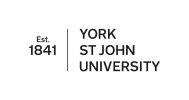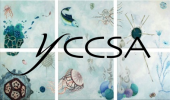© Pint of Science, 2025. All rights reserved.
Science and art are traditionally seen as separate, but should they be? Hear about the influences science has had on literature, and how a group of biologists are using ceramic art to see a different aspect of their science. Perhaps art and science are more linked than we thought?
Art vs Science: the battle for a multi-disciplinary existence
Kat Young
(PhD Student)
Within education and academia, art and science are often thought of as two separate disciplines, where people pick one side and declare that they are definitely not the other. But what if someone told you that they were not only intrinsically linked but that it is possible to happily exist in the space between the two?
This talk will look at why this artificial separation might exist, the experience of navigating this space through school and university, and offer some thoughts on how we can best support people who refuse to conform to the binary of ‘art’ vs ‘science’.
This talk will look at why this artificial separation might exist, the experience of navigating this space through school and university, and offer some thoughts on how we can best support people who refuse to conform to the binary of ‘art’ vs ‘science’.
Using ceramics to understand science
Alice Thomas
(Researcher)
Alongside the university’s artist-in-residence, Susan Halls, a group of biologists have been investigating the interaction between science and art and how they may inform and benefit one another. Here we will share some of the discussions we have had and some of the ceramic artworks we have produced as a result of our investigations, and how we think they may influence our scientific research areas.
Women, Science, and Literature in the Eighteenth Century
Millie Schurch
(PhD Student)
The most famous creative reaction to science written by a woman in the 18th and 19th centuries is Mary Shelley’s Frankenstein. But long before Shelley, women writers were responding to, engaging in, and producing, scientific knowledge in line with the empirical methods of the ‘New Science’. In this talk, we hear the untold story of women writers in the late eighteenth century and their involvement in science; we will read their poems about cutting-edge technology of the day; and we will see how they used literature itself to contribute to the creation of empirical scientific knowledge.
Map data © OpenStreetMap contributors.


